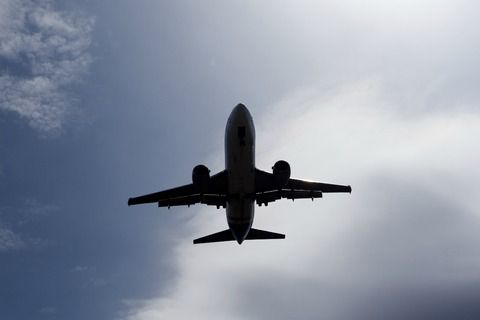You are looking for information, articles, knowledge about the topic nail salons open on sunday near me how cold is it at 40000 feet on Google, you do not find the information you need! Here are the best content compiled and compiled by the Chewathai27.com team, along with other related topics such as: how cold is it at 40000 feet how cold is it at 24000 feet, how cold is it at 15000 feet, how cold is it at 50,000 feet, how cold is it at 10,000 feet, how cold is it outside a plane, how cold is it at 35,000 feet, why is it so cold at 30,000 feet, temperature at 30,000 feet
Between 9,000 and 12,000 metres (30,000 and 40,000 feet), the cruising altitude of most jet aircraft, air temperatures range from −40 to −70 °F (−40 to −57 °C).With an increasing altitude, it gets colder, and the average temperature at 38000 ft. is around -54 (-65 F).Most airliners have maximum certified altitudes of 39,000 to 41,000 feet; a few can go higher but usually do not. Many business jets can fly higher, routinely cruising in the high 40,000s. The maximum altitude for many business jets is 51,000 feet.
| Geo-potential Altitude above Sea Level – h – (ft) | Temperature – t – (oF) | Acceleration of Gravity – g – (ft/s2) |
|---|---|---|
| 45000 | -69.70 | 32.036 |
| 50000 | –69.70 | 32.020 |
| 60000 | -69.70 | 31.990 |
| 70000 | -67.42 | 31.959 |
Contents
How cold is 50000 feet?
| Geo-potential Altitude above Sea Level – h – (ft) | Temperature – t – (oF) | Acceleration of Gravity – g – (ft/s2) |
|---|---|---|
| 45000 | -69.70 | 32.036 |
| 50000 | –69.70 | 32.020 |
| 60000 | -69.70 | 31.990 |
| 70000 | -67.42 | 31.959 |
How cold is it at 38000 ft?
With an increasing altitude, it gets colder, and the average temperature at 38000 ft. is around -54 (-65 F).
Can planes fly at 40 000 feet?
Most airliners have maximum certified altitudes of 39,000 to 41,000 feet; a few can go higher but usually do not. Many business jets can fly higher, routinely cruising in the high 40,000s. The maximum altitude for many business jets is 51,000 feet.
How cold is it 35000 feet up?
At 35,000 ft. (11,000 m), the typical altitude of a commercial jet, the air pressure drops to less than a quarter of its value at sea level, and the outside temperature drops below negative 60 degrees Fahrenheit (negative 51 degrees Celsius), according to The Engineering Toolbox.
Can you breathe at 35000 feet?
Whether you are flying aboard a small Cessna or a jumbo-sized Airbus A380, you can breathe freely inside the cabin without wearing a mask or respirator. Even at a cruising altitude of 35,000 feet, you shouldn’t have trouble breathing.
Why do planes fly at 37000 feet?
The biggest reason for this altitude lies in fuel efficiency. The thin air creates less drag on the aircraft, which means the plane can use less fuel in order to maintain speed. Less wind resistance, more power, less effort, so to speak. Spending less on fuel is also great for airlines, for obvious reasons.
Can you freeze 30000 feet?
On aircraft which fly above 30,000 feet, the temperature can often can get to temperatures below Jet-A’s freezing point.
Why do planes not freeze in the air?
However, when an airplane comes in contact with it, the airplane acts as the freezing nuclei, freezing the droplets immediately. At an altitude of 35,000 feet, however, the clouds are made of ice crystals so no supercooled droplets exist thus, airplanes do not face icing issues.
Why do planes fly at 38000 feet?
Due to lower resistance at higher altitudes, commercial airplanes can keep moving forward with minimal fuel expenditure. Commercial airplanes typically fly between 32,000 feet and 38,000 feet, with the sweet spot being approximately 35,000 feet, which is popularly referred to as cruising altitude.
Why do planes not fly over the Pacific?
Flying over the Pacific Ocean is avoided by most airlines for most flights because it usually doesn’t make sense to fly over it when shorter and safer routes exist. The Pacific Ocean is also more remote and less safe than the Indian and Atlantic Oceans to fly over, resulting in a higher chance of a plane crashing.
At what altitude does turbulence stop?
So what’s the best altitude to minimize your exposure to moderate or greater turbulence? Well, considering both in-cloud and out-of-cloud turbulence, flight between 8,000 and 12,000 feet will allow for the smoothest ride, on average.”
What do pilots see when flying?
Pilots have a unique viewpoint while flying private or commercial aircraft. They get an unobstructed view of stunning natural sights, such as pink lakes and rectangular-shaped icebergs. Some have reported seeing UFOs, while others have flown over swirling hurricanes.
Can planes fly at 50000 feet?
The highest that a commercial airplane can fly is 45,000 feet. Most military planes fly at around 50,000 feet and sometimes higher. Some rocket-powered planes can fly as high as 100,000 feet but they are specially designed for this purpose.
Is there oxygen at 35000 feet?
Natural availability of oxygen at 35,000 feet
In other words, there’s ample air at 35,000 feet, and there is sufficient oxygen in it. In fact, there’s even a reasonable amount of air at the altitude where the International Space Station operates!
How cold is it at airplane altitude?
Airplanes fly in minus 56 celsius (-69 degrees Fahrenheit) or colder conditions at altitude, therefore if the fluids can be kept warm, the airplane can usually operate.
How much does temperature drop per 1000 feet?
You will lose an average 3.5 degrees Fahrenheit for every 1000 feet of elevation you gain.
Can you survive flight in wheel well?
Wheel-well stowaways face considerable risk of death during all phases of flight. Some have been unable to remain in the well during takeoff and landing and have fallen to their death. Immediately after takeoff, the landing gear retracts into the wheel wells, with the potential to crush the stowaway.
What temperature is too cold for planes to fly?
If the airplane can be kept in a hangar prior to flight, it can operate in very, very cold conditions. Airplanes fly in minus 56 celsius (-69 degrees Fahrenheit) or colder conditions at altitude, therefore if the fluids can be kept warm, the airplane can usually operate.
How cold is too cold to go running?
A good rule of thumb to follow is that if it’s -20 degrees Fahrenheit (wind chill included), stay inside at all costs. If it’s between that and 25 degrees F, running can be done with proper precautions for cold weather, but if you have a medical condition, you should check with your doctor before suiting up.
temperature stress | Description, Symptoms, Physiology, & Prevention | Britannica
- Article author: www.britannica.com
- Reviews from users: 7117
Ratings
- Top rated: 4.8
- Lowest rated: 1
- Summary of article content: Articles about temperature stress | Description, Symptoms, Physiology, & Prevention | Britannica Updating …
- Most searched keywords: Whether you are looking for temperature stress | Description, Symptoms, Physiology, & Prevention | Britannica Updating temperature stress, physiological stress induced by excessive heat or cold that can impair functioning and cause injury or death. Exposure to intense heat increases body temperature and pulse rate. If body temperature is sufficiently high, sweating may cease, the skin may become dry, and deeper and faster breathing may follow. Headaches, nausea, disorientation, fainting, and unconsciousness also may occur. The initial symptom of cold stress is pain in exposed areas. Continued exposure may lead to numbness, mental confusion, lethargy, and irregular heartbeat. Temperature stress is a particular problem in aerospace medicine, and elaborate precautions must be taken to protect flierstemperature stress, encyclopedia, encyclopeadia, britannica, article
- Table of Contents:

U.S. Standard Atmosphere vs. Altitude
- Article author: www.engineeringtoolbox.com
- Reviews from users: 16050
Ratings
- Top rated: 3.5
- Lowest rated: 1
- Summary of article content: Articles about U.S. Standard Atmosphere vs. Altitude Updating …
- Most searched keywords: Whether you are looking for U.S. Standard Atmosphere vs. Altitude Updating air us U.S. standard atmosphere temperature altitude levelProperties of the US standard atmosphere ranging -5000 to 250000 ft altitude.
- Table of Contents:
Properties of the US standard atmosphere ranging -5000 to 250000 ft altitude
Related Topics
Related Documents
Engineering ToolBox – SketchUp Extension – Online 3D modeling!
Privacy
Advertise in the ToolBox
Citation

Flying during COVID-19: Why has the pandemic changed flying altitudes?
- Article author: www.usatoday.com
- Reviews from users: 40338
Ratings
- Top rated: 4.2
- Lowest rated: 1
- Summary of article content: Articles about Flying during COVID-19: Why has the pandemic changed flying altitudes? Updating …
- Most searched keywords: Whether you are looking for Flying during COVID-19: Why has the pandemic changed flying altitudes? Updating Retired airline captain John Cox answers your questions, from flying altitudes to the easiest airport to operatie in and out of in Washington, D.C.
- Table of Contents:

Why Plane Windows Don’t Roll Down, as Romney Would Like | Live Science
- Article author: www.livescience.com
- Reviews from users: 22485
Ratings
- Top rated: 4.0
- Lowest rated: 1
- Summary of article content: Articles about Why Plane Windows Don’t Roll Down, as Romney Would Like | Live Science Updating …
- Most searched keywords: Whether you are looking for Why Plane Windows Don’t Roll Down, as Romney Would Like | Live Science Updating Mitt Romney says the lack of roll-down windows on planes is “very dangerous.”
- Table of Contents:

Error 403 (Forbidden)
- Article author: www.quora.com
- Reviews from users: 5829
Ratings
- Top rated: 4.5
- Lowest rated: 1
- Summary of article content: Articles about Error 403 (Forbidden) According to International Standard Atmosphere, sea level temperature is 15 °C. Convert it in Kelvin by adding 273.15 in it. It will come out to be 288.15 … …
- Most searched keywords: Whether you are looking for Error 403 (Forbidden) According to International Standard Atmosphere, sea level temperature is 15 °C. Convert it in Kelvin by adding 273.15 in it. It will come out to be 288.15 …
- Table of Contents:

How Cold Does It Have to Be to Keep a Plane From Flying?
- Article author: www.travelandleisure.com
- Reviews from users: 24231
Ratings
- Top rated: 3.8
- Lowest rated: 1
- Summary of article content: Articles about How Cold Does It Have to Be to Keep a Plane From Flying? After all, commercial airplanes can cruise at an altitude of nearly 40,000 feet, where temperatures hover around -70 degrees Fahrenheit. Jet … …
- Most searched keywords: Whether you are looking for How Cold Does It Have to Be to Keep a Plane From Flying? After all, commercial airplanes can cruise at an altitude of nearly 40,000 feet, where temperatures hover around -70 degrees Fahrenheit. Jet … Cold temperatures probably aren’t why your flight is cancelled.
- Table of Contents:
/airplane-snow-weather-blizzard-COLDPLANE0118-19b3149643274d49a7895c3f4be48f6f.jpg)
Why planes fly at 35,000 feet: The reason for high altitude flights
- Article author: www.traveller.com.au
- Reviews from users: 41823
Ratings
- Top rated: 3.3
- Lowest rated: 1
- Summary of article content: Articles about Why planes fly at 35,000 feet: The reason for high altitude flights How cold is it up there? The higher you get, the colder it gets, up until 40,000 feet. If the temperature at ground level was 20C, at 40,000 … …
- Most searched keywords: Whether you are looking for Why planes fly at 35,000 feet: The reason for high altitude flights How cold is it up there? The higher you get, the colder it gets, up until 40,000 feet. If the temperature at ground level was 20C, at 40,000 … It would be reasonable to wager that the majority of air passengers have never questioned why the traditional flight altitude is 35,000 feet.Tips & advice
- Table of Contents:
Why do planes fly so high
You will now receive updates from
Traveller Newsletter
Traveller Newsletter
Latest Travel News
Most Popular Destinations

Quick Answer: How Cold Is It At 35000 Feet? – faaenglish.com
- Article author: faaenglish.com
- Reviews from users: 19993
Ratings
- Top rated: 3.9
- Lowest rated: 1
- Summary of article content: Articles about Quick Answer: How Cold Is It At 35000 Feet? – faaenglish.com Between 30,000 and 40,000 feet (9,000 and 12,000 m), the cruising altitude of most jet aircraft, air temperature ranges from … …
- Most searched keywords: Whether you are looking for Quick Answer: How Cold Is It At 35000 Feet? – faaenglish.com Between 30,000 and 40,000 feet (9,000 and 12,000 m), the cruising altitude of most jet aircraft, air temperature ranges from …
- Table of Contents:
Can you breathe at 35000 feet
Do planes eject toilet waste
What is the slowest a plane can fly
How cold is it at 40 000 feet
Do planes fly over Everest
Can you breathe at 37000 feet
Can a plane fly through a tornado
How long does a jet engine last
What is a pilot’s schedule like
Why can’t planes fly over the Pacific
How cold is the air at 35000 feet
What is the average temperature at 35 000 feet
What happens if you flush an airplane toilet while sitting on it
Why do aircraft fly at 35000 feet
Is there oxygen at 35000 feet
Is there less oxygen in airplanes
How high can you go before you can’t breathe
How many hours can a pilot fly per day
Related Question Answers
Similar Asks

What is the temperature at 30000 feet altitude? – All Famous Faqs
- Article author: allfamousbirthday.com
- Reviews from users: 19786
Ratings
- Top rated: 3.6
- Lowest rated: 1
- Summary of article content: Articles about What is the temperature at 30000 feet altitude? – All Famous Faqs What would the temperature be outse a jet flying at 40000 ft? But it isn’t the cold … …
- Most searched keywords: Whether you are looking for What is the temperature at 30000 feet altitude? – All Famous Faqs What would the temperature be outse a jet flying at 40000 ft? But it isn’t the cold … Between 30,000 and 40,000 feet (9,000 and 12,000 m), the cruising altitude of most jet aircraft, air temperature ranges from -40° F to -70° F (-40° C to -57°
- Table of Contents:
How cold is the air at 35000 feet
What is the air temperature at 36000 feet
What is the temp at 25000 feet
What would the temperature be outside a jet flying at 40000 ft
Can a person breathe at 30000 feet
What is the temp at 23000 feet
Why do planes fly at 32000 feet
How long does it take for a plane to crash from 35 000 feet
Does 30000 feet have oxygen
What is the air temperature at 32000 feet
Can you see a plane at 30000 feet
What is the atmospheric pressure at 30000 feet
Can you see a plane at 35000 feet from the ground
Can a plane fly over Mount Everest
How far can you see at 35000 feet
What happens if you fall from 30000 feet
At what altitude is there no oxygen
Is there oxygen at 35000 feet
How cold is it at 8000 feet
What altitude do planes fly
What is the temperature on a standard day at 20000 MSL
How long does it take a plane to reach 30000 feet
Do pilots have a toilet in the cockpit
How high can birds fly
What is a ghost plane
Why do planes not fly over the Pacific Ocean
Can you dive into the ocean from a plane
Can you breathe at 25000 feet
How far can you see from 30000 feet
Can you breathe 35000 feet
Can planes fly at 50000 feet
How cold is it at 37 000 feet
Can you breathe at 38000 feet
Can pilots see other planes
How fast does a plane gain altitude
What is the highest an airplane can go
What is the pressure at 30000 feet below sea level
What is the ATM of 30000 feet
What is the ambient air pressure at 40000 feet in bar
How far can pilots see
How far can a human eye see a plane
How far away can you see airplane lights

How jet stowaways survive the freezing cold
- Article author: nypost.com
- Reviews from users: 34001
Ratings
- Top rated: 3.4
- Lowest rated: 1
- Summary of article content: Articles about How jet stowaways survive the freezing cold At 38,000 feet — the cruising altitude of the Hawaiian Airlines flight that the FBI says the 15-year-old took Sunday — the outse air … …
- Most searched keywords: Whether you are looking for How jet stowaways survive the freezing cold At 38,000 feet — the cruising altitude of the Hawaiian Airlines flight that the FBI says the 15-year-old took Sunday — the outse air … LOS ANGELES — Despite the subzero temperatures and lack of oxygen, people can survive even a long journey in the wheel well of a jetliner. The latest example…News,faa,fbi,hawaii,hawaiian airlines,stowaway
- Table of Contents:
Now on
Page Six
Now on Decider
Share This Article
More Stories
Share Link

Flying In Cold Weather – Southern Wings
- Article author: www.southernwings.co.nz
- Reviews from users: 7414
Ratings
- Top rated: 3.3
- Lowest rated: 1
- Summary of article content: Articles about Flying In Cold Weather – Southern Wings If the temperature at ground level was 20 degrees Celsius, at heights of between 30,000 feet and 40,000 feet it would be between -40 and -57 … …
- Most searched keywords: Whether you are looking for Flying In Cold Weather – Southern Wings If the temperature at ground level was 20 degrees Celsius, at heights of between 30,000 feet and 40,000 feet it would be between -40 and -57 … Flying in cold weather does present its own unique set of challenges for aircraft, ground crew and pilot, however there is much more to the circumstances
- Table of Contents:
How Cold Can Planes Fly
Why Do Planes Fly So High
Can Planes Take Off In Extreme Cold
Common Challenges Of Cold Weather Flying

How cold is it at 35000 feet?
- Article author: faq-all.com
- Reviews from users: 41832
Ratings
- Top rated: 3.2
- Lowest rated: 1
- Summary of article content: Articles about How cold is it at 35000 feet? Between 30,000 and 40,000 feet (9,000 and 12,000 m), the cruising altitude of most jet aircraft, air temperature ranges … …
- Most searched keywords: Whether you are looking for How cold is it at 35000 feet? Between 30,000 and 40,000 feet (9,000 and 12,000 m), the cruising altitude of most jet aircraft, air temperature ranges … How cold is it at 35000 feet? How cold is it up there? The higher you get, the colder it gets, up until 40,000 feet. If the temperature at ground level was 20C , at 40,000 feet it would be – 57C . At 35,000 feet the air temperature is about – 54C . …
- Table of Contents:

How Aircraft Are Designed to Keep You Comfortable at 37,000 Feet
- Article author: thepointsguy.com
- Reviews from users: 47860
Ratings
- Top rated: 3.3
- Lowest rated: 1
- Summary of article content: Articles about How Aircraft Are Designed to Keep You Comfortable at 37,000 Feet This means that at cruising altitude of 37,000 feet, the outse air … it was able to climb up to altitudes of 40,000 feet without the … …
- Most searched keywords: Whether you are looking for How Aircraft Are Designed to Keep You Comfortable at 37,000 Feet This means that at cruising altitude of 37,000 feet, the outse air … it was able to climb up to altitudes of 40,000 feet without the … Getting on a flight is generally taken for granted these days. Enjoy a restaurant-quality meal, watch a film on a huge screen and then have a sleep in a flatLower cabin altitudes, and fresher, more moist air all provide for a much healthier and relaxing flight experience.
- Table of Contents:
The Atmosphere
On the Aircraft
The Boeing 787 Dreamliner
How to Look After Yourself on Board
Bottom Line

See more articles in the same category here: https://chewathai27.com/toplist.
temperature stress | Description, Symptoms, Physiology, & Prevention
temperature stress, physiological stress induced by excessive heat or cold that can impair functioning and cause injury or death. Exposure to intense heat increases body temperature and pulse rate. If body temperature is sufficiently high, sweating may cease, the skin may become dry, and deeper and faster breathing may follow. Headaches, nausea, disorientation, fainting, and unconsciousness also may occur. The initial symptom of cold stress is pain in exposed areas. Continued exposure may lead to numbness, mental confusion, lethargy, and irregular heartbeat.
Temperature stress is a particular problem in aerospace medicine, and elaborate precautions must be taken to protect fliers and astronauts from it. Between 9,000 and 12,000 metres (30,000 and 40,000 feet), the cruising altitude of most jet aircraft, air temperatures range from −40 to −70 °F (−40 to −57 °C). Modern aircraft have sealed cabins and heaters to protect pilots and passengers from wind blasts and cold air. Protective clothing and electrically heated flight suits are used when exposure to the open air is possible.
Britannica Quiz Medical Conditions and Discoveries Quiz What does thrombosis refer to? Who discovered that bacteria must never gain entry to an operation wound? Find out what you know with this quiz.
Above 30,000 metres (100,000 feet), the sun’s radiant heat can be intense. Supersonic aircraft, which sometimes fly at such altitudes, must withstand frictional heat caused by high speed. Such vehicles are made of heat-resistant materials and have air-conditioned cabins or cockpits. Fliers wear reflective outerwear and ventilated or porous clothing to promote circulation of air in order to permit perspiration.
New from Britannica New from Britannica To trick counterfeiters, Benjamin Franklin deliberately misspelled “Pennsylvania” when printing official currency for the American colony. See All Good Facts
Spacecraft and space suits utilize special insulation, air-conditioning, and heating units to maintain a balance between the excessive heat and cold encountered in the vacuum of space. Excessive heat arises from solar radiation, human metabolism, operation of on-board equipment, and (while passing through Earth’s atmosphere) atmospheric friction. Extreme cold arises when an astronaut or a spacecraft remains in the shadow of another object long enough for internal heat to radiate into space. See also hypothermia; heatstroke.
U.S. Standard Atmosphere vs. Altitude
A “Standard Atmosphere” can be regarded as an average pressure, temperature and air density for various altitudes.
The “U.S. Standard Atmosphere 1976” is an atmospheric model of how the pressure, temperature, density, and viscosity of the Earth’s atmosphere changes with altitude. It is defined as having a temperature of 288.15 K (15 oC, 59 oF) at the sea level 0 km geo-potential height and 101325 Pa (1013.25 hPa, 1013.25 mbar, 760 mm Hg, 29.92 in Hg).
The atmosphere are divided in
the Troposphere – ranging 0 to 11 km (36.000 ft) altitude
– ranging altitude the Stratosphere – ranging 11 to to 51 km (167.000 ft) altitude
– ranging altitude the Mesosphere – ranging 51 to 71 km (232.000 ft) altitude
– ranging altitude the Ionosphere – ranging above 71 km (above 232.000 ft) altitude
U.S. Standard Atmosphere Air Properties – Imperial (BG) Units
Geo-potential Altitude above Sea Level
– h –
(ft) Temperature
– t –
(oF) Acceleration of Gravity
– g –
(ft/s2) Absolute Pressure
– p –
(lb/in2) Density
– ρ –
(10-4 slugs/ft3)
Dynamic Viscosity
– μ –
(10-7 lb s/ft2)
(10-7 slug /(ft s)) -5000 76.84 32.189 17.554 27.45 3.836 0 59 32.174 14.696 23.77 3.737 5000 41.17 32.159 12.228 20.48 3.637 10000 23.36 32.143 10.108 17.56 3.534 15000 5.55 32.128 8.297 14.96 3.430 20000 -12.26 32.112 6.759 12.67 3.324 25000 -30.05 32.097 5.461 10.66 3.217 30000 -47.83 32.082 4.373 8.91 3.107 35000 -65.61 32.066 3.468 7.38 2.995 40000 -69.70 32.051 2.730 5.87 2.969 45000 -69.70 32.036 2.149 4.62 2.969 50000 -69.70 32.020 1.692 3.64 2.969 60000 -69.70 31.990 1.049 2.26 2.969 70000 -67.42 31.959 0.651 1.39 2.984 80000 -61.98 31.929 0.406 0.86 3.018 90000 -56.54 31.897 0.255 0.56 3.052 100000 -51.10 31.868 0.162 0.33 3.087 150000 19.40 31.717 0.020 0.037 3.511 200000 -19.78 31.566 0.003 0.0053 3.279 250000 -88.77 31.415 0.000 0.00065 2.846
U.S. Standard Atmosphere Air Properties – SI Units
Geo potential Altitude above Sea Level
– h –
(m) Temperature
– t –
(oC) Acceleration of Gravity
– g –
(m/s2) Absolute Pressure
– p –
(104 N/m2) Density
– ρ –
(kg/m3) Dynamic Viscosity
– μ –
(10-5 N s/m2) -1000 21.50 9.810 11.39 1.347 1.821 0 15.00 9.807 10.13 1.225 1.789 1000 8.50 9.804 8.988 1.112 1.758 2000 2.00 9.801 7.950 1.007 1.726 3000 -4.49 9.797 7.012 0.9093 1.694 4000 -10.98 9.794 6.166 0.8194 1.661 5000 -17.47 9.791 5.405 0.7364 1.628 6000 -23.96 9.788 4.722 0.6601 1.595 7000 -30.45 9.785 4.111 0.5900 1.561 8000 -36.94 9.782 3.565 0.5258 1.527 9000 -43.42 9.779 3.080 0.4671 1.493 10000 -49.90 9.776 2.650 0.4135 1.458 15000 -56.50 9.761 1.211 0.1948 1.422 20000 -56.50 9.745 0.5529 0.08891 1.422 25000 -51.60 9.730 0.2549 0.04008 1.448 30000 -46.64 9.715 0.1197 0.01841 1.475 40000 -22.80 9.684 0.0287 0.003996 1.601 50000 -2.5 9.654 0.007978 0.001027 1.704 60000 -26.13 9.624 0.002196 0.0003097 1.584 70000 -53.57 9.594 0.00052 0.00008283 1.438 80000 -74.51 9.564 0.00011 0.00001846 1.321
US Atmosphere – Temperature vs. Elevation
Did You Know Why Airplanes Do Not Fly Much Higher Than 35-38k Ft?
2016-10-12
Many of us have probably wondered why planes can’t fly higher than they do now. Well, we have the answers to that! There are three key reasons for this:
1. ENGINE
Jet airplane engines are designed to run at peak efficiency with a specific amount of oxygen. In order to match that oxygen level, the plane must generally fly within that 30 to 40 thousand foot window. At that altitude, you get the most thrust possible for every drop of jet fuel.
2. AIR DENSITY
The higher the altitude is, the thinner (less dense) the air gets. With less air in the way there is less friction on an airplane. Travelling in the thin air requires much less energy in comparison to thicker air levels. At higher altitudes there is less weather differentiation which causes turbulence. If you have ever experienced turbulence you know that it’s usually not a pleasant experience.
3. TEMPERATURE
The third reason is air temperature! With an increasing altitude, it gets colder, and the average temperature at 38000 ft. is around -54 (-65 F). Colder air means that the engine will run more efficiently.
So you have finished reading the how cold is it at 40000 feet topic article, if you find this article useful, please share it. Thank you very much. See more: how cold is it at 24000 feet, how cold is it at 15000 feet, how cold is it at 50,000 feet, how cold is it at 10,000 feet, how cold is it outside a plane, how cold is it at 35,000 feet, why is it so cold at 30,000 feet, temperature at 30,000 feet

